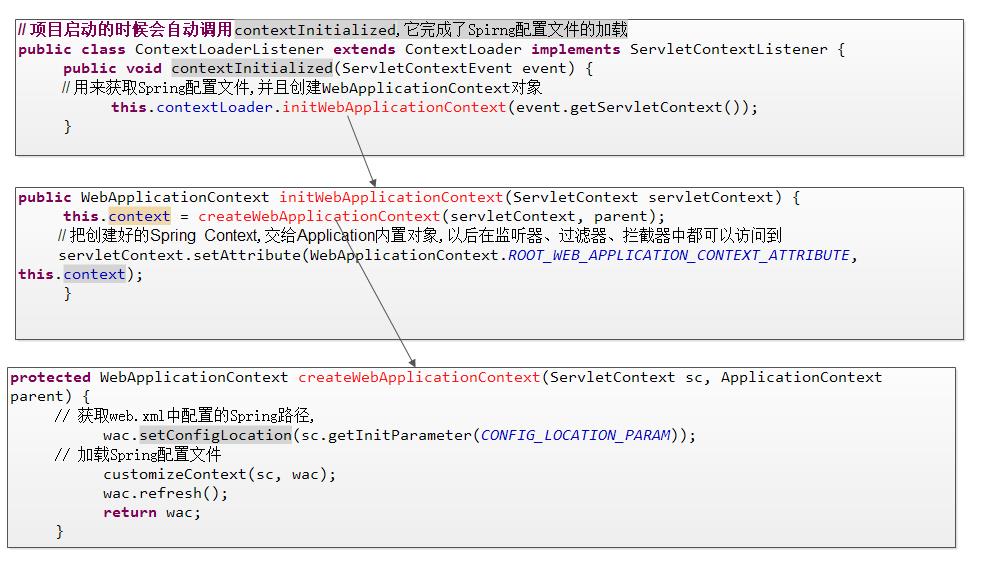关于如何在Listener中注入service和ServletContextListener源码分析
Posted 1234ztc
tags:
篇首语:本文由小常识网(cha138.com)小编为大家整理,主要介绍了关于如何在Listener中注入service和ServletContextListener源码分析相关的知识,希望对你有一定的参考价值。
今天在做项目时突然发现我该如何向listener中注入service对象,因为监听器无法使用注解注入。
此时有人会想用以下代码通过xml的方式注入:
ApplicationContext context=new ClassPathXmlApplication(*.xml); productService =(ProductService)context.getBean("productService");
这样的话会导致一个问题,那就是Tomcat会两次加载spring的配置文件。所以这种方式并不可取。
通过分析源码我画出了一张图:

从上面的源码我们可以看出其实spring的配置文件最终加载后就是放在ServletContext中。
所以我们可以直接从ServletContext中通过这个键取出配置文件,并注入productService。
public class InitDataListener implements ServletContextListener { ProductService productService=null; @Override public void contextDestroyed(ServletContextEvent servletContextEvent) { } @Override public void contextInitialized(ServletContextEvent servletContextEvent) { //注入Service,直接到ServletContext中获取Spring文件,但此方法不常用 // ApplicationContext context=(ApplicationContext) servletContextEvent.getServletContext().getAttribute(WebApplicationContext.ROOT_WEB_APPLICATION_CONTEXT_ATTRIBUTE); // productService=(ProductService) context.getBean("productService"); // System.out.println(productService); WebApplicationContext webApplicationContext= WebApplicationContextUtils.getWebApplicationContext(servletContextEvent.getServletContext()); productService=(ProductService) webApplicationContext.getBean("produtService"); } }
以上是关于关于如何在Listener中注入service和ServletContextListener源码分析的主要内容,如果未能解决你的问题,请参考以下文章
关于jpa的Specification自定义函数,实现oracle的decode;以及如何在静态方法中调用注入的service
Spring在service层获取session和request
Spring在service层获取session和request